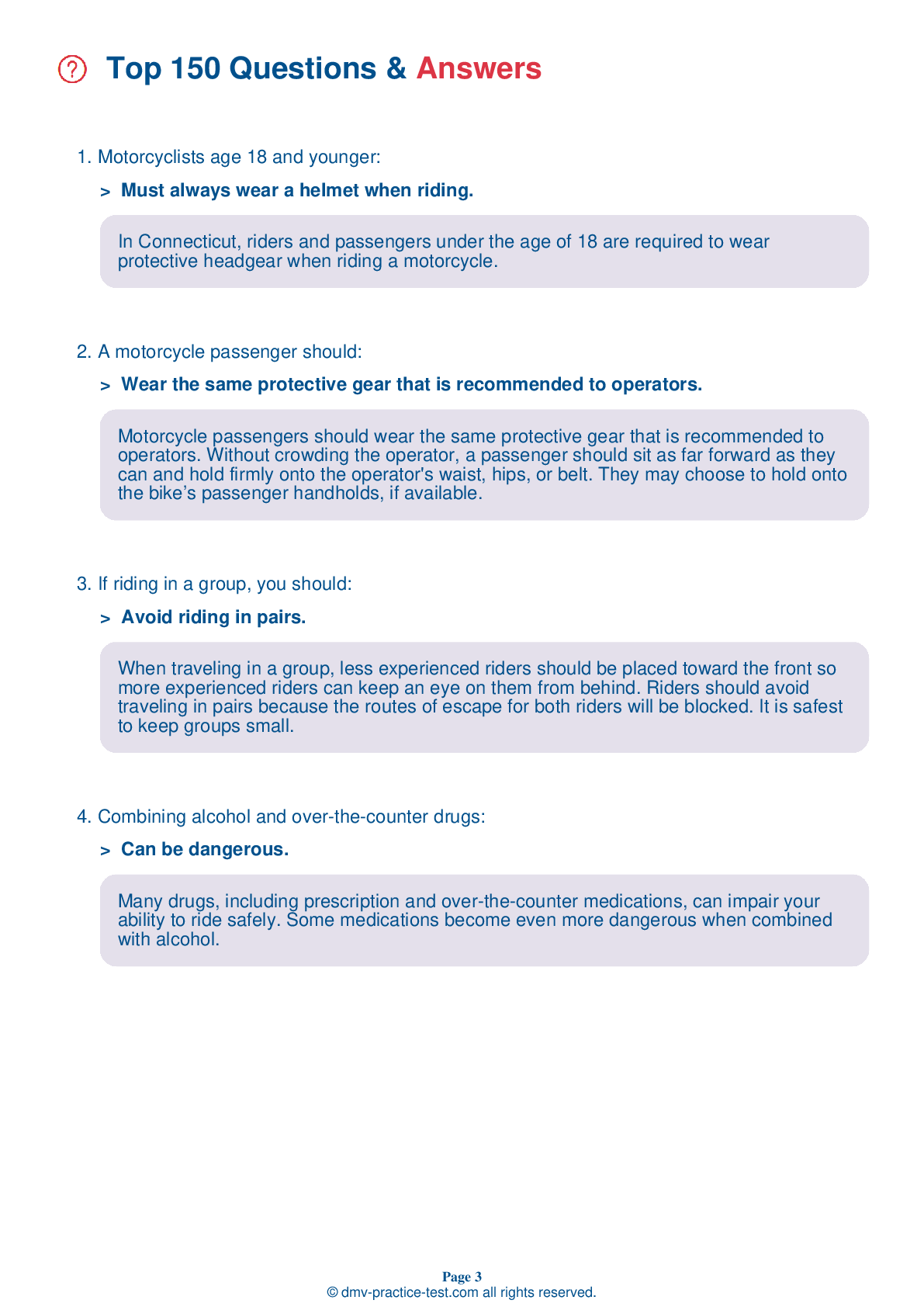Motorcycle Test | License CT 2025 | FREE Online Practice! #7 Page 2 of 3
Take this FREE motorcycle test (license in CT 2025) to check your knowledge of the road rules. To improve your results, download a motorcycle handbook online, study theory, and practice for free on our website. Still worried about how to get a motorcycle license in Connecticut in 2025? Check our website for more sample tests, train as much as possible, and boost your grades!
6 . A leather jacket:
For your protection, you should wear a long-sleeved jacket, ideally made of leather, when riding. In warm weather, a leather jacket can help protect you against dehydration. Many motorcycle jackets are designed to help keep you cool even when the weather is hot.
7 . A person over the age of 21 with a minimum blood alcohol content (BAC) of ______ is considered legally intoxicated.
If above the legal drinking age of 21, a person with a blood alcohol concentration (BAC) of 0.08 percent or higher is considered legally intoxicated. It is illegal and dangerous to operate a motor vehicle while under the influence of alcohol.
8 . Which of the following should you inspect during a pre-ride check?
Before setting off on any ride, you should do a thorough check of your motorcycle. Inspect the tires, oil and fluid levels, headlight, tail light, turn signals, brake light, clutch and throttle, mirrors, brakes, and horn.
9 . When traveling in heavy traffic, maintain a minimum ______ following distance.
An expanded cushion of space is needed if your motorcycle will take longer than normal to stop. If the pavement is slippery, if you cannot see through the vehicle ahead of you, or if traffic is heavy and another driver may try to squeeze in front of you, open up to a minimum three-second following distance.
10 . When riding a three-wheeled motorcycle, a rider should:
When operating a three-wheeled motorcycle, it is possible to have only two wheels in contact with the ground. This condition occurs whenever enough weight is transferred outside of what are known as “tip-over lines.”
See the exact questions that will be on the 2025 Connecticut DMV exam.
99.2% of people who use the cheat sheet pass the FIRST TIME
Jeneen was tired of paying $5/gallon. She got herself a scooter that required the motorcycle license. She studyed the motorcycle test cheat sheet and passed her test the next day!
Christopher tells us how he knew nothing prior to obtaining the motorcycle study guide, and he only got one question wrong because he clicked on the wrong answer by mistake.



